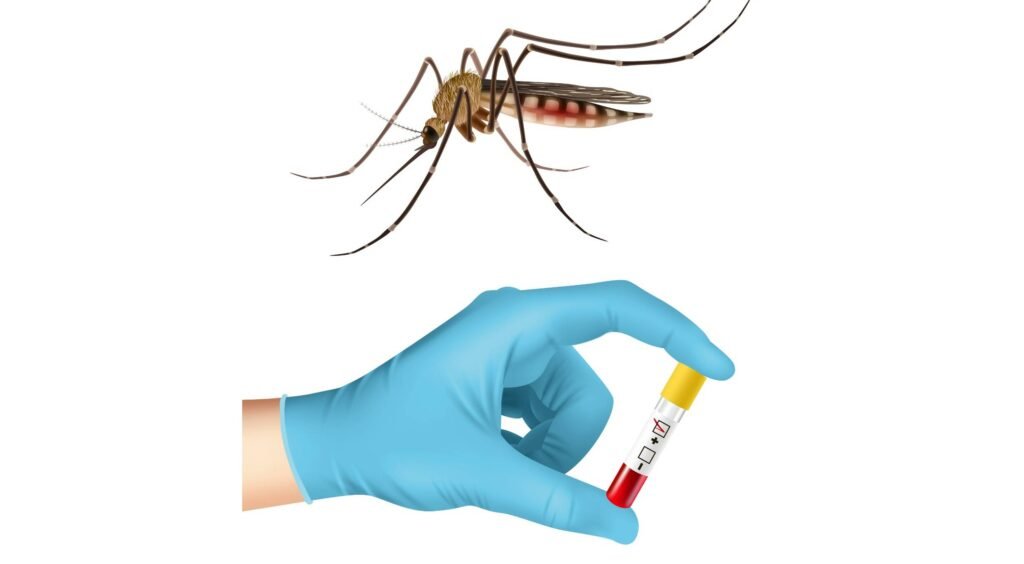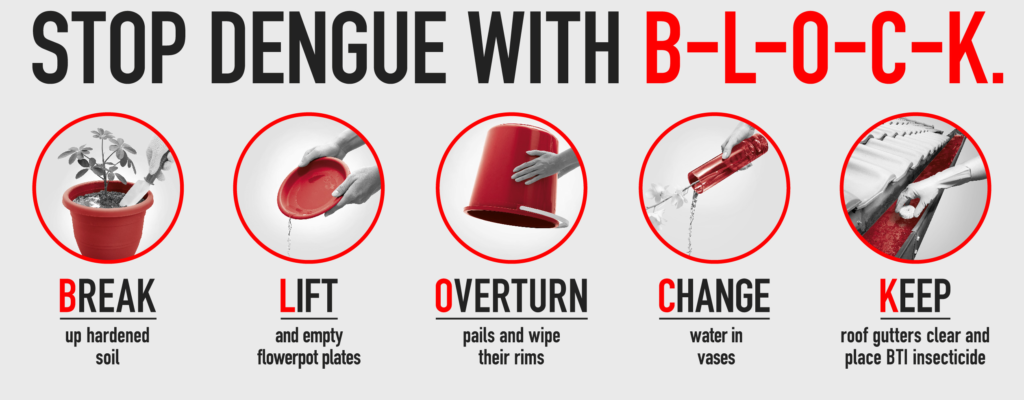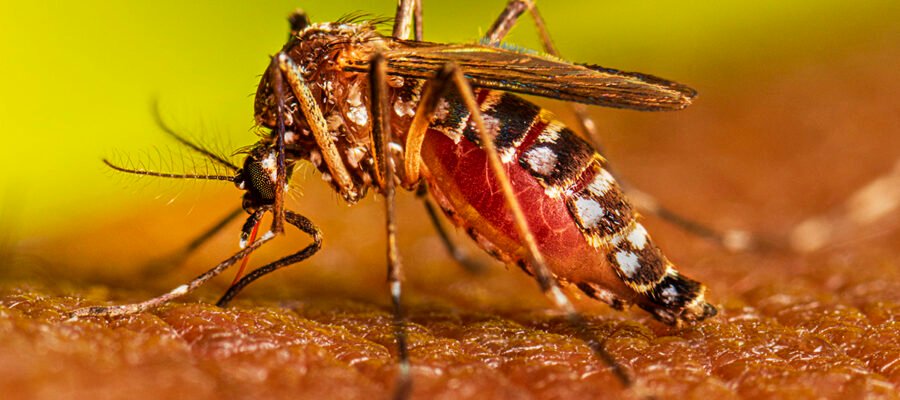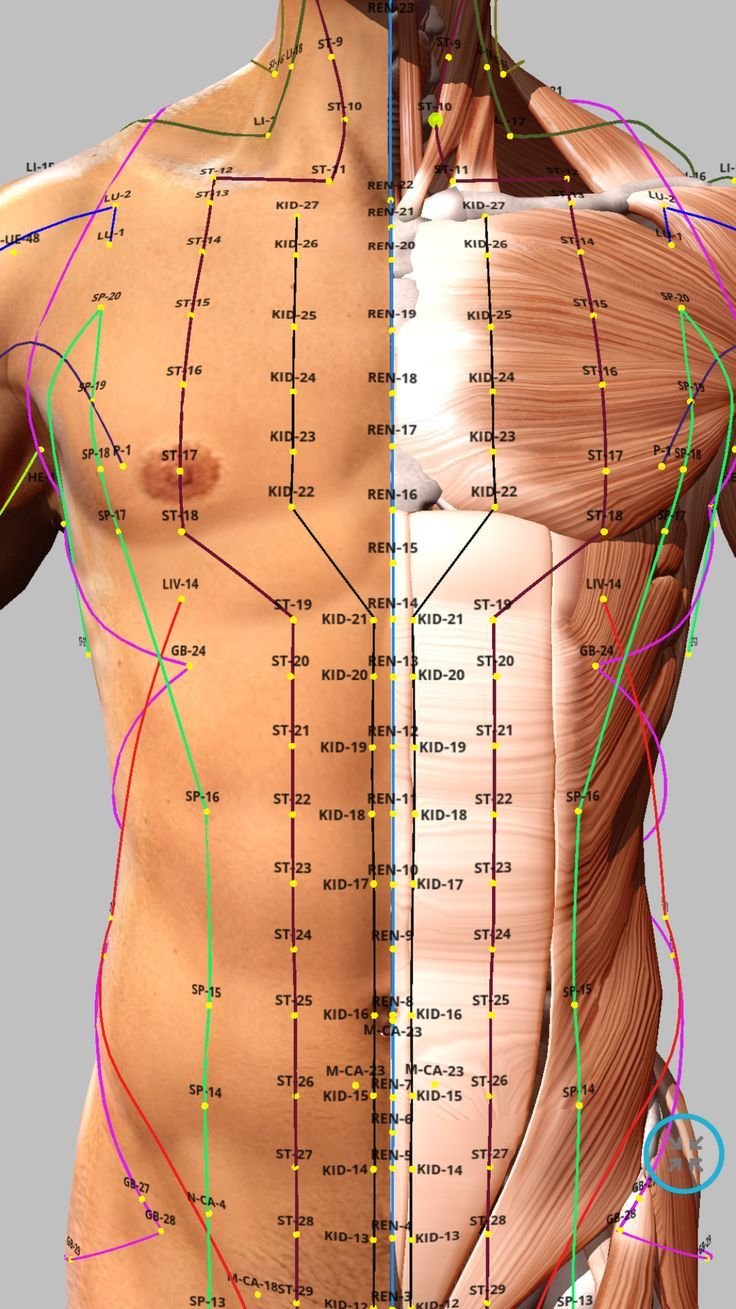
What is dengue fever ( introduction )
Dengue is a viral infection caused by the dengue virus, which is primarily transmitted to humans through the bites of infected female Aedes mosquitoes, particularly Aedes aegypti and Aedes albopictus. This infectious disease is a significant global health concern, primarily affecting tropical and subtropical regions around the world.
Key points about dengue:
1. Viral Origin: Dengue virus belongs to the Flaviviridae family and is categorized into four distinct serotypes (DENV-1, DENV-2, DENV-3, and DENV-4). Infection with one serotype typically provides lifelong immunity to that specific serotype but only temporary immunity to the others.
2. Mosquito Transmission: Aedes mosquitoes are the primary vectors responsible for transmitting the dengue virus. When a mosquito bites a person already infected with the virus, it can become a carrier and transmit the virus to other individuals through subsequent bites.
3. Wide Geographic Distribution: Dengue is prevalent in many parts of the world, particularly in tropical and subtropical regions of Asia, the Pacific Islands, the Americas, Africa, and the Caribbean. Travelers to these areas are at risk of contracting the disease.
4. Varied Clinical Presentation: Dengue infection can manifest with a wide range of symptoms, from mild flu-like symptoms to more severe forms, such as dengue hemorrhagic fever (DHF) and dengue shock syndrome (DSS). Severe cases can be life-threatening.
5. Symptoms: Common symptoms of dengue include sudden high fever, severe headaches, joint and muscle pain, pain behind the eyes, rash, and bleeding manifestations like nosebleeds or gum bleeding.
6. No Specific Treatment: There is no specific antiviral treatment for dengue. Management primarily involves supportive care, such as hydration and pain relief, along with close monitoring in severe cases. Early detection and medical intervention are essential in severe cases.
7. Prevention: The best way to prevent dengue is through mosquito control measures, such as eliminating breeding sites for Aedes mosquitoes, using mosquito nets or repellents, and wearing protective clothing. Additionally, efforts to control mosquito populations and develop dengue vaccines are ongoing.
Dengue represents a significant public health challenge, and its burden has been increasing in recent years. It poses a threat not only to individuals’ health but also to communities and healthcare systems in affected regions. Awareness, prevention, and timely medical care are critical components in the global fight against dengue.
What is first sign of dengue
The first sign of dengue is typically a sudden onset of a high fever, which is often accompanied by other flu-like symptoms. This fever can develop within 4 to 10 days after being bitten by an infected mosquito. The fever associated with dengue is usually very high, reaching up to 104°F (40°C), and it tends to last for several days.
In addition to the fever, common early symptoms of dengue may include:
- Severe Headache: Many people with dengue experience intense headaches, often described as a “bone-breaking” or “behind the eyes” headache.
- Pain Behind the Eyes: Pain and discomfort behind the eyes, known as retro-orbital pain, are frequently reported.
- Joint and Muscle Pain: Severe joint and muscle pain, which is sometimes referred to as “breakbone fever,” can make movement very painful.
- Rash: A rash may develop a few days after the fever begins. This rash can appear as small red spots or patches on the skin and is typically not itchy.
It’s important to note that while these symptoms are common, not everyone with dengue will experience all of them, and some individuals may have mild or atypical symptoms. Moreover, these early symptoms of dengue can overlap with many other illnesses, so a definitive diagnosis often requires laboratory tests to confirm the presence of the dengue virus.
If you or someone you know develops a sudden high fever along with any of these symptoms, especially if you have been in an area where dengue is prevalent or if there has been a recent outbreak, it is essential to seek medical attention promptly for proper diagnosis and management. Early detection and medical care are crucial for ensuring a better outcome, especially if the disease progresses to severe dengue.
7 warnings symptoms of dengue
Dengue is a mosquito-borne viral infection that can cause a wide range of symptoms, from mild to severe. It’s important to be aware of the warning signs of severe dengue (also known as dengue hemorrhagic fever or dengue shock syndrome) because timely medical intervention is crucial in these cases. Here are seven warning symptoms of dengue:
- High Fever: Sudden onset of a high fever, often reaching up to 104°F (40°C), is a common early symptom of dengue.
- Severe Headache: Intense headaches, often described as a “bone-breaking” or “behind the eyes” headache, can be a warning sign.
- Pain Behind the Eyes: Pain and discomfort behind the eyes, known as retro-orbital pain, is another common symptom.
- Joint and Muscle Pain: Severe joint and muscle pain, often referred to as “breakbone fever,” can make movement very painful.
- Rash: A rash may develop a few days after the fever starts. It can appear as small red spots or patches on the skin. This rash is typically not itchy.
- Bleeding Symptoms: Warning signs of severe dengue include bleeding from the gums, nose, or easy bruising. Gastrointestinal bleeding can also occur, leading to bloody stools or vomit.
- Persistent Vomiting and Severe Abdominal Pain: Continuous vomiting and intense abdominal pain can be indicators of severe dengue and should prompt immediate medical attention.
It’s important to note that not everyone with dengue will experience severe symptoms, and many cases of dengue are mild. However, if you or someone you know experiences any of these warning signs, especially if they persist or worsen, seek medical care promptly. Severe dengue can be life-threatening, but early intervention and proper medical management can significantly improve the chances of a full recovery.
Symptoms of dengu in kids
Dengue symptoms in children are generally similar to those in adults. However, children may exhibit some unique signs and may be more vulnerable to severe dengue (dengue hemorrhagic fever or dengue shock syndrome). Common dengue symptoms in children include:
- Fever: Like in adults, a sudden high fever is one of the hallmark symptoms of dengue in children. The fever may spike up to 104°F (40°C) or higher.
- Headache: Children with dengue often experience headaches, which can be intense.
- Pain Behind the Eyes: Pain and discomfort behind the eyes, referred to as retro-orbital pain, can be present.
- Joint and Muscle Pain: Children may complain of severe joint and muscle pain, which can make them feel very uncomfortable.
- Rash: A rash may develop a few days after the onset of fever. It typically appears as small red spots or patches on the skin, though it is generally not itchy.
- Nausea and Vomiting: Children with dengue may experience nausea and vomiting, which can contribute to dehydration.
- Abdominal Pain: Some children may have abdominal pain or discomfort.
- Bleeding Symptoms: In severe cases, children may exhibit bleeding symptoms, such as nosebleeds, gum bleeding, or easy bruising. These are signs of dengue hemorrhagic fever (DHF) and require immediate medical attention.
It’s important to note that children, especially infants and very young children, may have difficulty expressing their symptoms clearly. Parents and caregivers should be vigilant and seek medical attention if they notice any unusual or severe symptoms in their children.
Moreover, if a child develops dengue, it is crucial to ensure they stay hydrated by offering fluids like oral rehydration solutions and monitoring for signs of dehydration. In severe cases or if there is any suspicion of DHF or DSS, immediate medical care is essential, as these conditions can be life-threatening.
Preventive measures, such as mosquito control and the use of mosquito nets or repellents, are also important to reduce the risk of dengue infection in children, especially in regions where the disease is prevalent.
Dengu fever temperature pattern
Dengue fever is characterized by a specific temperature pattern that often follows a recognizable pattern over several days. Here’s a typical temperature pattern associated with dengue fever:
- Sudden High Fever: Dengue fever typically begins with a sudden and abrupt onset of a high fever. The fever is usually quite high, often exceeding 104°F (40°C). This fever can come on very suddenly, often within 4 to 10 days after being bitten by an infected mosquito.
- Febrile Phase: After the initial onset of fever, there is a febrile (fever) phase that typically lasts for around 2 to 7 days. During this phase, the fever remains high, and the person may experience intense symptoms such as severe headaches, joint and muscle pain, pain behind the eyes, and general weakness and discomfort.
- Critical Phase: In some cases, after the febrile phase, there is a critical phase during which the fever subsides. This phase usually occurs around the third to seventh day of illness. During the critical phase, the patient’s temperature drops, and they may experience a temporary sense of relief. However, this phase is often followed by a critical period during which complications can occur.
- Recovery Phase: After the critical phase, if there are no complications, the patient enters a recovery phase. During this phase, the fever gradually subsides, and the individual starts to feel better. Recovery can take several days to weeks, depending on the severity of the infection.
It’s important to note that not all individuals with dengue fever will experience the same temperature pattern, and some may have atypical symptoms or variations in the fever pattern. Additionally, while dengue fever typically follows this pattern, it can progress to severe dengue (dengue hemorrhagic fever or dengue shock syndrome) in a minority of cases. Severe dengue is a medical emergency and requires immediate medical attention.
If you or someone you know experiences a sudden high fever along with other dengue symptoms, it’s essential to seek medical care promptly for proper diagnosis and management. Early detection and medical intervention are crucial for ensuring a better outcome, especially in severe cases of dengue.
Causes of Dengue
Dengue is caused by the dengue virus, which belongs to the Flaviviridae family. There are four distinct serotypes of the dengue virus: DENV-1, DENV-2, DENV-3, and DENV-4. These serotypes can cause a wide range of symptoms, from mild dengue fever to severe forms of the disease, such as dengue hemorrhagic fever (DHF) and dengue shock syndrome (DSS).
The primary cause of dengue is the transmission of the virus to humans through the bites of infected female Aedes mosquitoes, primarily Aedes aegypti and Aedes albopictus. Here’s how the transmission process works:
- Mosquito Bite: An Aedes mosquito becomes infected with the dengue virus when it bites a person who is already infected with the virus.
- Viral Replication: After acquiring the virus, the mosquito undergoes a process of viral replication, and the virus multiplies in its salivary glands.
- Subsequent Bites: Infected mosquitoes can then transmit the virus to other humans through their bites. When an infected mosquito bites a person, it injects the virus into the person’s bloodstream, leading to infection.
It’s important to note that dengue is not directly transmitted from person to person. Instead, it relies on the mosquito vector for transmission.
Other potential modes of transmission, such as mother-to-child transmission during childbirth or through blood transfusion or organ transplantation, have been reported but are relatively rare compared to mosquito-borne transmission.
Preventing dengue primarily involves mosquito control measures, including eliminating breeding sites for Aedes mosquitoes, using mosquito nets or repellents, wearing protective clothing, and implementing community-based efforts to reduce mosquito populations. Additionally, ongoing research into dengue vaccines aims to provide further protection against the disease.
Dengue is a significant global health concern, especially in tropical and subtropical regions, and efforts to control its transmission and manage the disease continue to be a priority for public health organizations worldwide.
Is dengue contagious
Dengue itself is not directly contagious from person to person. It is primarily transmitted to humans through the bites of infected female Aedes mosquitoes, particularly Aedes aegypti and Aedes albopictus. These mosquitoes become infected with the dengue virus when they bite a person who is already infected with the virus. Afterward, they can transmit the virus to other individuals through their bites.
Once a person becomes infected with the dengue virus, they can develop symptoms and may have the virus circulating in their bloodstream. However, the virus in the bloodstream is not readily contagious to others. It cannot be spread through casual contact, such as shaking hands or hugging, or through respiratory droplets like the flu or COVID-19.
There are some rare and specific situations where dengue transmission can occur outside of mosquito bites:
- Mother-to-Child Transmission: There have been rare cases of dengue transmission from an infected mother to her baby during childbirth, but this mode of transmission is relatively uncommon.
- Blood Transfusion and Organ Transplantation: In very rare cases, dengue can be transmitted through blood transfusions or organ transplantation if the donor’s blood or organ contains the virus. To mitigate this risk, blood and organ donation centers often screen for dengue in areas where the virus is endemic.
In summary, dengue is primarily transmitted by mosquitoes, and person-to-person transmission is not a common mode of spread. Preventing dengue primarily involves mosquito control measures, including eliminating breeding sites for Aedes mosquitoes and protecting oneself from mosquito bites in areas where dengue is prevalent.
also read Coronavirus Symptoms
Is dengue dangerious
Is dengue dangerious
Dengue can be a dangerous and potentially life-threatening disease, especially when it progresses to its severe forms, which include dengue hemorrhagic fever (DHF) and dengue shock syndrome (DSS). Here are some key points about the danger of dengue:
- Mild Dengue Fever: Many cases of dengue result in mild symptoms, which include high fever, severe headache, joint and muscle pain, rash, and pain behind the eyes. While uncomfortable, these symptoms are usually not life-threatening, and most people recover with appropriate medical care and supportive treatment.
- Severe Dengue: In some cases, dengue can progress to severe forms. Severe dengue, including DHF and DSS, is characterized by more serious symptoms and complications. These can include severe bleeding, plasma leakage, organ impairment, and shock.
- Life-Threatening Complications: DHF and DSS are life-threatening complications of dengue. DHF is characterized by bleeding, a drop in platelet count, and increased vascular permeability, leading to plasma leakage. DSS occurs when there is severe plasma leakage, resulting in shock, organ failure, and a higher risk of death.
- Timely Medical Intervention: Early detection and proper medical care are crucial for individuals with severe dengue. Hospitalization and close monitoring are often required, along with supportive treatments such as fluid replacement and blood transfusions. When managed promptly, the mortality rate for severe dengue can be significantly reduced.
- Risk Factors: Certain risk factors, such as previous dengue infections with different serotypes and the age of the individual, can increase the risk of severe dengue. Young children and older adults may be at a higher risk of severe disease.
- Prevention: Preventing dengue is essential. This includes mosquito control measures, such as eliminating breeding sites for Aedes mosquitoes, using mosquito nets or repellents, and wearing protective clothing. Vaccination efforts are ongoing to help prevent dengue infection.
In regions where dengue is endemic, public health measures and awareness campaigns play a crucial role in reducing the transmission of the virus and preventing severe cases. Travelers to dengue-endemic areas should also take precautions to avoid mosquito bites.
In summary, dengue can be dangerous, particularly if it progresses to severe forms like DHF and DSS. However, with early detection, appropriate medical care, and preventive measures, the risk of severe outcomes can be significantly reduced. It is essential to seek medical attention promptly if you suspect dengue infection, especially if you experience severe symptoms.
First Aid of Dengue
There is no specific first aid treatment for dengue fever, but providing supportive care and monitoring for symptoms is essential if someone is suspected of having dengue. Dengue can range from mild to severe, and severe cases can be life-threatening, so early detection and proper medical care are critical. Here are some general guidelines for providing first aid for dengue:
- Seek Medical Help: If you or someone you know exhibits symptoms of dengue, especially if they have a sudden high fever along with other symptoms like severe headache, joint and muscle pain, and rash, seek medical attention immediately. Early diagnosis and treatment are essential.
- Rest and Hydration: While waiting for medical assistance, rest and stay hydrated. Drink plenty of fluids, including water, oral rehydration solutions, clear broths, and fruit juices to prevent dehydration.
- Pain Relief: Over-the-counter pain relievers like acetaminophen (paracetamol) can help reduce fever and alleviate pain. Avoid non-steroidal anti-inflammatory drugs (NSAIDs) like ibuprofen, aspirin, or naproxen, as they can increase the risk of bleeding in dengue.
- Avoid Aspirin and NSAIDs: As mentioned, aspirin and NSAIDs should be avoided, as they can lead to increased bleeding risk in dengue patients.
- Monitor for Warning Signs: Keep a close eye on the person’s condition. If they develop warning signs of severe dengue, such as severe abdominal pain, persistent vomiting, bleeding from the gums or nose, difficulty breathing, or confusion, seek immediate medical help.
- Use Mosquito Nets and Repellents: If you are in an area where dengue is prevalent, protect yourself from mosquito bites using bed nets, mosquito repellents, and wearing long-sleeved clothing.
- Prevent Further Mosquito Bites: To prevent the spread of dengue, avoid getting bitten by mosquitoes if you have the virus. Stay indoors or use mosquito nets, and ensure that your living area is free from mosquito breeding sites.
- Follow Medical Advice: If diagnosed with dengue, follow the treatment and advice provided by your healthcare provider. This may include hospitalization and more intensive care for severe cases.
Remember that dengue can progress rapidly, especially in severe cases, so it’s crucial to seek medical attention promptly. Do not attempt to self-diagnose or self-treat dengue, especially severe forms of the disease like dengue hemorrhagic fever (DHF) or dengue shock syndrome (DSS). Timely medical intervention is essential for a better prognosis and to prevent complications.
Treatment of dengue
The treatment of dengue primarily focuses on supportive care, as there is no specific antiviral medication to treat the dengue virus itself. The goal of treatment is to relieve symptoms, manage complications, and prevent severe dengue (dengue hemorrhagic fever or dengue shock syndrome). Here are the key aspects of dengue treatment:
- Medical Evaluation: If you suspect you have dengue or are diagnosed with it, seek medical attention immediately. Early diagnosis and proper medical care are crucial.
- Hospitalization: Individuals with severe dengue, especially those with warning signs or severe symptoms, may require hospitalization. Hospitalization allows for close monitoring and prompt intervention in case of complications.
- Fluid Replacement: Maintaining proper fluid balance is essential. Dengue can cause dehydration, so intravenous (IV) fluids may be administered to ensure adequate hydration. Oral rehydration solutions can also be used.
- Pain and Fever Management: Pain relievers such as acetaminophen (paracetamol) are often recommended to reduce fever and alleviate pain. Avoid non-steroidal anti-inflammatory drugs (NSAIDs) like ibuprofen, aspirin, or naproxen, as they can increase the risk of bleeding in dengue.
- Monitoring: Regular monitoring of vital signs (blood pressure, pulse rate, temperature, etc.) and laboratory tests (complete blood count, platelet count, hematocrit, etc.) is necessary to track the progression of the disease and identify complications.
- Platelet Transfusions: In severe cases with a significant drop in platelet count or bleeding complications, platelet transfusions may be required. These are typically done in a hospital setting.
- Treatment of Complications: If complications such as severe bleeding or shock occur, they are treated promptly with appropriate medical interventions, which may include blood transfusions and intensive care.
- Rest and Recovery: Adequate rest is essential for recovery. It may take several weeks for a person with dengue to fully recover.
- Preventing Mosquito Bites: During recovery, continue to protect yourself from mosquito bites to prevent further mosquito-borne transmission.
- Follow Medical Advice: Adhere to the treatment plan and recommendations provided by your healthcare provider.
It’s crucial to remember that while most dengue cases are mild and can be managed with supportive care, severe dengue can be life-threatening. Early detection, timely medical intervention, and proper care significantly improve the chances of a full recovery and reduce the risk of complications. If you or someone you know experiences dengue symptoms, especially severe symptoms or warning signs, seek medical attention without delay.
Summary
Here’s a summary of the key points about dengue:
Dengue is a viral infection caused by the dengue virus, primarily transmitted to humans through the bites of infected Aedes mosquitoes, particularly Aedes aegypti and Aedes albopictus. There are four serotypes of the dengue virus.
Symptoms of Dengue:
- Common symptoms of dengue include sudden high fever, severe headache, joint and muscle pain, pain behind the eyes, and a rash.
- In severe cases, dengue can lead to life-threatening complications, such as dengue hemorrhagic fever (DHF) and dengue shock syndrome (DSS), which can cause severe bleeding, plasma leakage, and organ dysfunction.
Transmission:
- Dengue is not directly contagious from person to person; it primarily relies on mosquito vectors for transmission.
- Infected mosquitoes transmit the virus to humans when they bite and inject the virus into the bloodstream.
- Other rare modes of transmission include mother-to-child transmission during childbirth and through blood transfusions or organ transplantation.
Prevention and Control:
- Preventing dengue involves mosquito control measures, such as eliminating breeding sites for Aedes mosquitoes, using mosquito nets or repellents, and wearing protective clothing.
- Vaccination efforts are ongoing to provide protection against dengue infection.
- Public health measures and awareness campaigns are crucial for reducing the transmission of the virus in endemic regions.
Severity:
- Dengue can range from mild dengue fever to severe forms like DHF and DSS.
- Severe dengue is a medical emergency and requires immediate medical attention.
- Timely medical intervention can significantly improve the chances of recovery in severe cases.
In summary, while mild dengue cases may have flu-like symptoms, dengue can be a dangerous and potentially life-threatening disease when it progresses to its severe forms. Early detection, proper medical care, and preventive measures are key to reducing the risk and impact of dengue.

FAQs
Here are some frequently asked questions (FAQs) about dengue along with their answers:
1. What is dengue fever?
- Dengue fever is a viral infection caused by the dengue virus, primarily transmitted through the bites of infected Aedes mosquitoes.
2. What are the common symptoms of dengue fever?
- Common symptoms include sudden high fever, severe headache, joint and muscle pain, pain behind the eyes, and a rash. Nausea, vomiting, and mild bleeding may also occur.
3. How is dengue diagnosed?
- Dengue is diagnosed through blood tests, such as polymerase chain reaction (PCR) tests or antibody tests, which detect the presence of the dengue virus or antibodies in the blood.
4. Is dengue contagious from person to person?
- No, dengue is not directly contagious from person to person. It primarily relies on infected mosquitoes for transmission.
5. What is severe dengue, and how is it different from dengue fever?
- Severe dengue includes forms like dengue hemorrhagic fever (DHF) and dengue shock syndrome (DSS), characterized by severe bleeding, plasma leakage, and organ dysfunction. It is more life-threatening than mild dengue fever.
6. How can dengue be prevented?
- Prevention involves mosquito control measures, such as eliminating breeding sites for Aedes mosquitoes, using mosquito nets or repellents, and wearing protective clothing. Vaccination efforts are also ongoing.
7. Is there a vaccine for dengue?
- Yes, there are vaccines available to protect against dengue infection. These vaccines are recommended in areas where dengue is endemic.
8. What is the treatment for dengue fever?
- There is no specific antiviral treatment for dengue. Management involves supportive care, including hydration and pain relief. Severe cases may require hospitalization and blood transfusions.
9. Are there any complications associated with dengue?
- Severe dengue, such as DHF and DSS, can lead to complications like shock, organ failure, and a higher risk of death if not treated promptly.
10. Where is dengue commonly found? –
Dengue is prevalent in tropical and subtropical regions of Asia, the Pacific Islands, the Americas, Africa, and the Caribbean. Travelers to these areas are at risk of contracting the disease.
11. How can I protect myself from dengue when traveling to an endemic area?
– Protect yourself from mosquito bites by using repellents, wearing long-sleeved clothing, and staying in accommodations with screened windows or air conditioning. Also, be mindful of eliminating potential mosquito breeding sites in your surroundings.
https://en.wikipedia.org/wiki/Dengue_fever
readWhat are vitamins | Complete table & list






